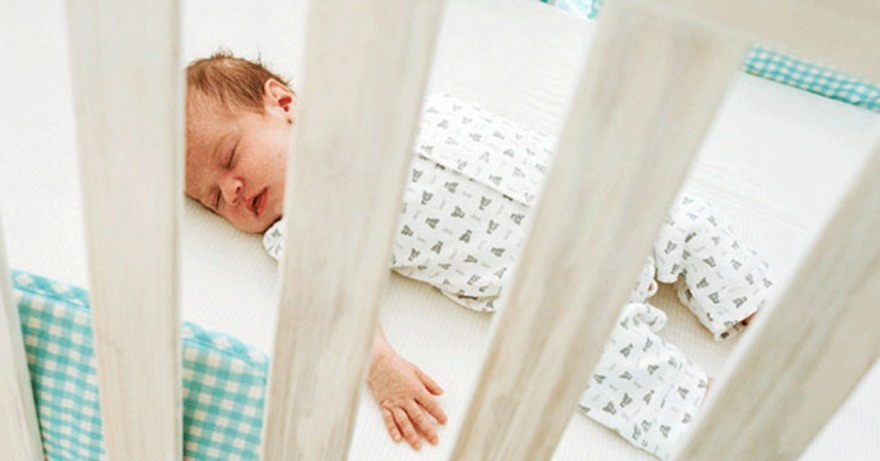From restoring energy levels, to the building blocks of brain connection. Sleep, it’s crucial for her development. But, if sleep is so essential, why doesn’t she sleep more soundly? On average, from 2 weeks – 3 months of age your little cherub will sleep 15-17 hours across a 24 hour period. That’s a load of sleep hours to be locked up in order for your bub to grow best, but sometimes getting the baby that sleep is difficult.
Babies Sleepy Cues
Understanding How Sleepy Is Your Babies?
- Sleepy – Babies need a nap in 10 mins
– Pinkish eyebrow: This could be a sign of a blocked tear duct, which is common in babies. It could also be a sign of an eye infection or irritation. If the pinkness persists or is accompanied by other symptoms, it is best to consult a doctor.
– Staring off: Babies may stare off into space for a variety of reasons. It could be that they are fascinated by something they are looking at, or they may be tired or overstimulated. It is generally not a cause for concern unless it is accompanied by other symptoms.
– Avert Eyes: Babies may avert their eyes when they feel overwhelmed or overstimulated. This can be a sign that they need a break or some quiet time to rest.
– Turns Head: Babies may turn their head to avoid overstimulation or to indicate that they are done with a particular activity. They may also turn their head to look at something that interests them.
– Zones Out: Like adults, babies can sometimes zone out or appear to be daydreaming. This may be a sign that they are tired or that they need a break from stimulation. It is generally not a cause for concern unless it is accompanied by other symptoms.
- Tired – Babies ready for a bed
– Yawning: Babies yawn just like adults do when they are tired.
– Rubbing Eyes: When a baby rubs their eyes, it’s a sign that they are feeling sleepy and trying to soothe themselves.
– Getting Fussy: Babies can become cranky and irritable when they are tired and need to sleep.
– Pulling Face / Ears: Sometimes babies will pull at their face or ears when they are tired, as a way to self-soothe.
– Being Clingy: When a baby is tired, they may want to be held and comforted by their caregiver. - Overtired – Babies sould be sleeping NOW
– Arching Back: When a baby arches their back, it could be a sign of discomfort or pain in their stomach, often associated with colic or reflux.
– Rigid Body: A rigid or stiff body could indicate discomfort or pain, such as when a baby has an ear infection or teething pain.
– Hands in fists: Babies may clench their fists when they are experiencing pain or discomfort.
– Hysterical Crying: Hysterical crying, or inconsolable crying, can be a sign of pain, discomfort, or overstimulation
– Overacting: hen a baby overreacts to a stimulus, such as a sudden noise, it may indicate that they are feeling overwhelmed or overstimulated.
Understanding sleep types
Your baby’s sleep can best be described as a cycle. It can be helpful to understand this cycle in order to appreciate your baby’s sleep/sleeplessness. Let’s look at this cycle a little closer so you can understand why your baby wakes so frequently, and what (if anything!) we can do to help her sleep better.
Like you, your baby’s sleep combines both light and deep sleep.
- Light sleep (REM)
Light sleep, also known as rapid eye movement (REM) sleep is easily woken from. This is the time when your baby will dream and will most likely wake and eventually communicate to you, by crying! Hello broken nights! It’s during this light sleep that blood flow nearly doubles, increasing the manufacture of certain nerve proteins, crucial for brain development. Researchers believe it’s possible your baby’s brain grows to nearly 70 percent of adult volume in her first two years. So, if you have that (probably wakeful!) light sleeper, congratulate them on their genius! - Deep sleep (NREM)
Deep sleep, also known as non-rapid eye movement (NREM) sleep. This sleep is the deepest and is responsible for the brain transferring short-term memories into long-term storage. It’s believed to be the time when your baby’s body will most intensely produce the human growth hormone and is important for cell reproduction and repair.
What’s with all this waking?

Babies wake lots and all will (in the least) wake briefly at the end of each sleep cycle, which is usually at between 30-50 minutes intervals. Some babies (sorry, most!) will wake and cry and will need your help to settle them again, others will fuss but put themselves back to sleep (some of us can only dream!)
In these first few months, tiny babies (with tiny tummies) seldom sleep for more than four hour stretches without needing a feed.
From three to six months most babies begin to settle. Some will start sleeping five-hour stretches at night time, but don’t break out the Veuve just yet, one or two wakes a night is normal, but the good news is their deep sleep WILL start to lengthen.
A few tips to help your baby through her sleep cycles:
1. Wrap your baby
Newborn babies are familiar with the small confines of your womb, snuggled up and warm.
Wrapping helps prevent random arm movements that occur in the light stages of sleep, or when baby is coming out of her deep sleep cycle. These involuntary stirrings, can disturb your baby from getting that bountiful, growth-giving sleep.

2. Soothing baby
If she wakes, don’t wait for her to rev-up. Check that she hasn’t got a dirty nappy (a risky affair I know… but a quick sniff generally does the trick), and that she’s not due for her next feed. If all clear, pat her gently and rhythmically across her tummy until she settles again. Leave the room.
If day time, do this several times and you might be lucky to score another sleep cycle (admit it, it’s good for everyone), but don’t persist to the point of distress (yours or hers!), pick her up, give her a cuddle and pop her in the pram for a walk. It’s good for you both and she’ll probably doze off again anyway. Us mums spend way too much time stressing on this one.
Night time is a little different. When you go in to re-settle her, keep lights dim and resist the urge to tell her how cheeky but cute she is. If she can’t be ‘fobbed off’ by a gentle pat on her belly, a cuddle/feed might be your next best option.
3. Feed on demand
Satisfy your baby’s needs to be fed on demand – both day and night. A well-awake baby, given ample time to feed will be satisfied for the longest and will give her the best shot at a good slumber.
4. Get baby’s temperature right
If your baby’s uncomfortable (hot or cold), it will work against her reaching or sustaining a deeper sleep.
Don’t over-dress baby. If you’re wrapping your baby, a light full length ‘onesie’ under their wrap will do the trick. Alternatively, look for sleep-suits made with smart fabrics that understand the importance of temperature control in newborns.
Sleep, it’s important for baby and important for you. Your little cutie-pie will be responsible for a mammoth 400-750 hours of YOUR lost sleep in the first year*. Bless her cotton-socks. Lucky she’s so darn cute.
*According to The National Sleep Research Project



Leave a Reply